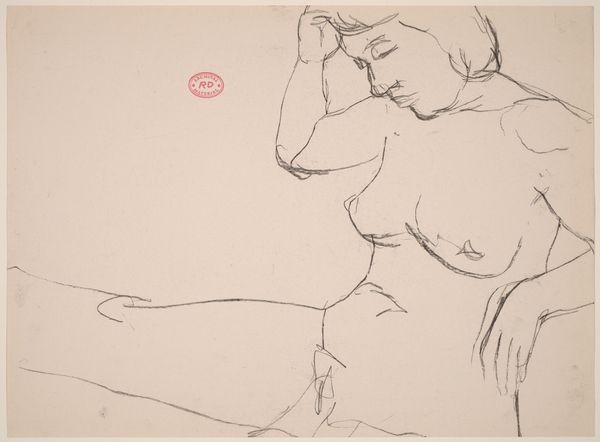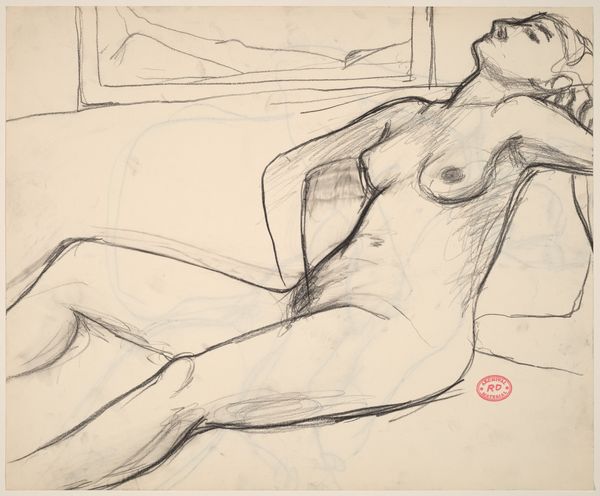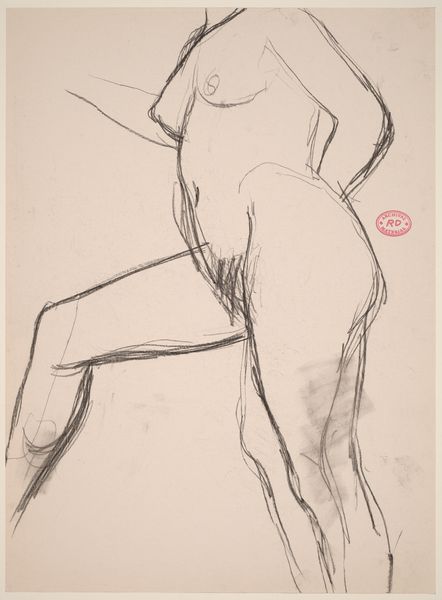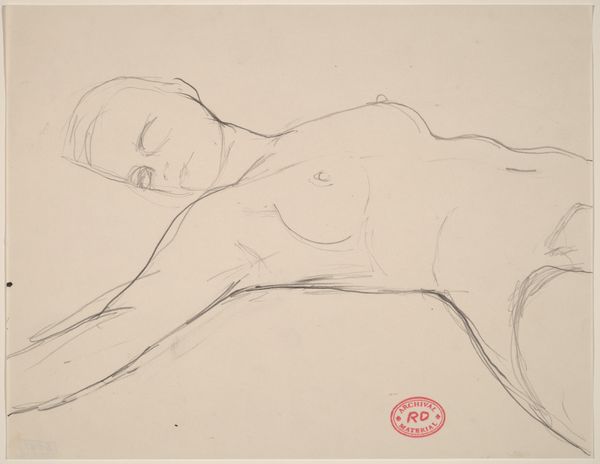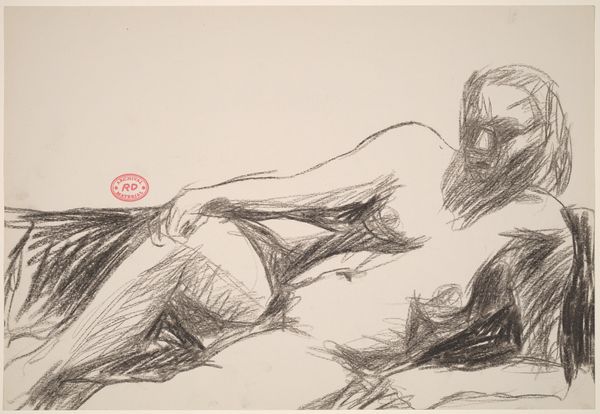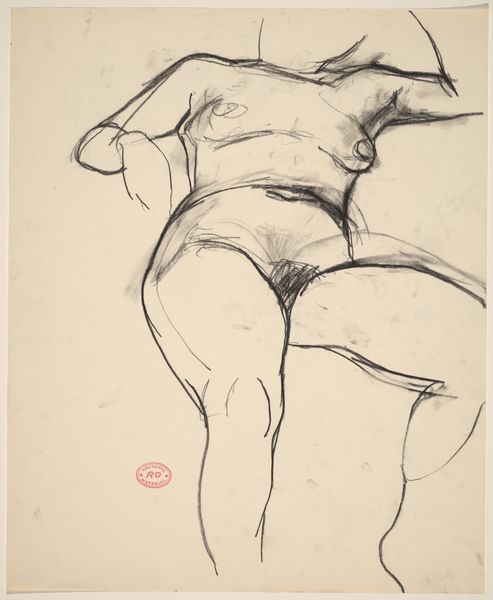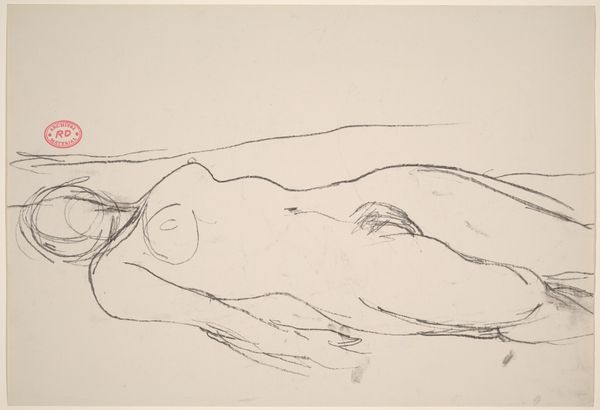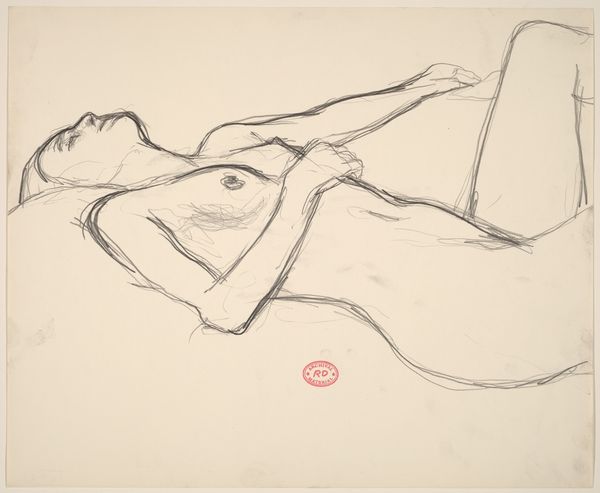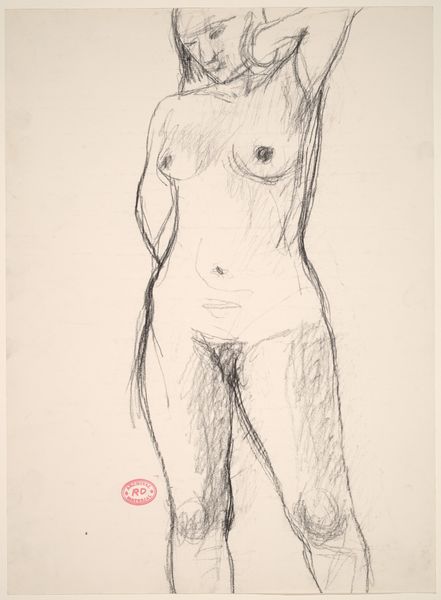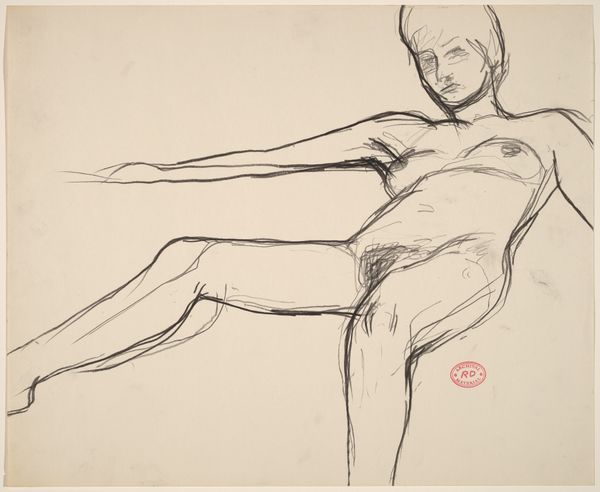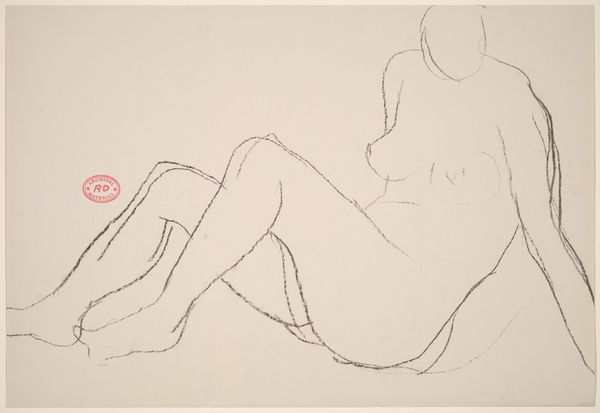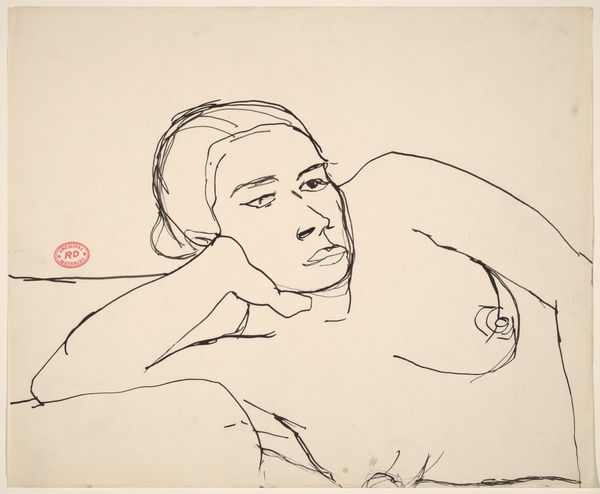![Untitled [reclining nude wearing a headband] by Richard Diebenkorn](/_next/image?url=https%3A%2F%2Fd2w8kbdekdi1gv.cloudfront.net%2FeyJidWNrZXQiOiAiYXJ0ZXJhLWltYWdlcy1idWNrZXQiLCAia2V5IjogImFydHdvcmtzLzkwMGJiMmQ0LWViOWMtNGY1Zi05MTk3LWI0MjlhYmJhNzgzMC85MDBiYjJkNC1lYjljLTRmNWYtOTE5Ny1iNDI5YWJiYTc4MzBfZnVsbC5qcGciLCAiZWRpdHMiOiB7InJlc2l6ZSI6IHsid2lkdGgiOiAxOTIwLCAiaGVpZ2h0IjogMTkyMCwgImZpdCI6ICJpbnNpZGUifX19&w=3840&q=75)
drawing, pencil
#
drawing
#
figuration
#
form
#
bay-area-figurative-movement
#
pencil drawing
#
pencil
#
line
#
nude
#
realism
Dimensions: overall: 35.2 x 43.2 cm (13 7/8 x 17 in.)
Copyright: National Gallery of Art: CC0 1.0
Editor: Here we have Richard Diebenkorn's "Untitled [reclining nude wearing a headband]," a pencil drawing from somewhere between 1955 and 1967. There's a kind of relaxed, informal feel to it, like a quick sketch. How do you interpret this work in relation to the time it was created? Curator: Well, the mid-20th century was a really interesting period for figurative art. After the dominance of abstract expressionism, many artists, like Diebenkorn, returned to the figure, but with a different lens. They weren't necessarily aiming for academic realism. Instead, this feels almost like a challenge to the grand narratives of abstraction, a deliberately intimate and domestic subject. What do you think the social climate may have affected his choices of art making during this era? Editor: I think that Diebenkorn's turn toward figuration could be seen as a more personal response to the rapidly changing political landscape during the 50's. There were increasingly popular public conversations on individualism, so his more intimate pieces were his way of turning inwards for inspiration, as abstraction's popularity became more politicized. How might the drawing's style be reflecting on the institutions of art? Curator: I would say this sketch, with its visible linework and imperfections, consciously avoids the slickness often valued by the established art world. Think about the art market at that time – the pressure to produce large-scale, gallery-friendly pieces. This drawing almost feels like a quiet rebellion. Editor: That's a fascinating point! I hadn't considered how its casual style could be a deliberate pushback against institutional expectations. It definitely provides an unexpected perspective on that period. Curator: Exactly. It reminds us that the story of art history isn't just about the celebrated masterpieces, but also these smaller, more personal works that challenge the prevailing norms. I think that understanding both allows us to consider Diebenkorn as a product and an influencer of society during that time.
Comments
No comments
Be the first to comment and join the conversation on the ultimate creative platform.
